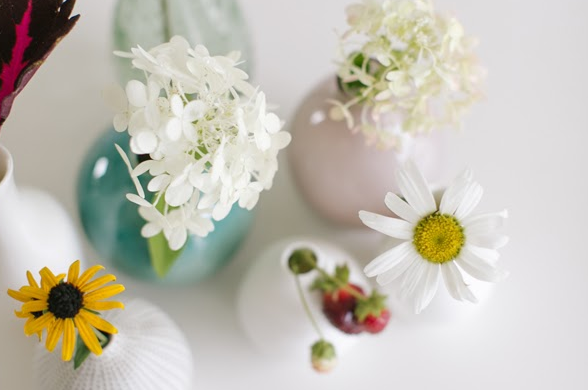Last time I introduced you to my saying “Decluttering is Self-Love,” and along with that goes that I have no rules on how to declutter — or in what order to declutter. Instead, what I’d like to introduce you to are my 3 key principles for successful decluttering.
Don’t have time to read? Listen to this info on my podcast here.
I came up with these three principles to make decluttering easier for you — especially for those of you who are new to decluttering or feel they had a hard time decluttering.
My 3 key principles are:
Principle 1: Divide the area you are decluttering into small, manageable chunks
Principle 2: Start with the least personal area
Principle 3: A few minutes a day keeps the chaos away. Taking five minutes to declutter daily is more powerful than a three hour purge on the weekend once in a blue moon.
Think of these principles holistically — they work together. By starting with small, manageable chunks in the least personal areas, you will actually get traction spending by only a few minutes a day.
Gradually, you will transform your space, build your decluttering muscles, and increase the resilience needed to tackle more difficult areas. What they also do is help you change your habits so that maintaining a decluttered home will be easy too.
Think about it: if you don’t change your daily habits, you will have chaos again in a few days, weeks, or months. And because this cycle is so exhausting, you most likely have a bigger chaos than before. Now let’s look at these principles a little closer:
Principle 1: Divide your area into small, manageable chunks
Many people get overwhelmed just thinking about the decluttering they need to do. If they start on a decluttering project, they often take on too much, don’t manage their energy well, and then crash and burn. By this I mean that they leave the task unfinished, and it often looks more chaotic and cluttered than before.
Also, if you try to declutter this way, you will feel emotionally and physically depleted. The little gremlin in your ear will start telling you “see you can’t do it, you are just not an organized person,” and all kinds of other negative talk (that’s mental clutter by the way).
You are feeling disappointed and even more overwhelmed, and because the experience was not a positive one, you are less likely to finish the started project or to start a new one, you give up, but that’s giving up on yourself, please don’t do that.
A sense of accomplishment and a feeling of lightness follow a successful decluttering session.
If you don’t bite off more than you can chew and can feel good about what you did, you can experience the positive feelings that decluttering gives us. A feeling of space, lightness, and peace.
So, divide the area into small, manageable chunks. Examples of small areas are:
– a small drawer
– a shelf in a closet, or maybe even half a shelf
– a small corner in a room
– under the sink
– your handbag or your wallet
– the trunk of your car
Principle 2: Start with the least personal area
Decluttering can be difficult, as nearly all our objects carry some form of attachment. There is a very practical side to decluttering, in the tools and how-to techniques, but there is also an emotional component.
Many people do not get started because they already know they will have a hard time letting go, especially of items with a strong sentimental attachment.
By starting with the least personal areas of your home, you will get to practice your decluttering skills, and experience success which will inspire and motivate you to do more. In that way, you will be more emotionally prepared to deal with letting go of your more personal items.
So which areas are the least personal? This is of course very individual. I once helped a client declutter her laundry room and it turned out to be a very personal and emotional area. So only you can answer this question, but typically less personal areas are bathroom, kitchen, broom closet, under the sink, a sock drawer…
Principle 3: A few minutes a day keeps the chaos away
This principle is especially important and my favorite, you hear me say this over and over too (together with Decluttering is Self-Love).
Most people think they need several hours, a whole day or even a whole weekend to make a dent in their clutter. But that’s like doing a crash diet: it’s not sustainable and only provides you with short-term success and then all the clutter creeps back in.
The easiest way to declutter is to create daily routines that become automatic, like habits you don’t even think about. Decluttering and being organized becomes a way of life and a supportive, peaceful home and office is the simple side effect.
So now let’s put it all together and do some decluttering:
(You can let me guide you through it if you listen to the podcast, starting at minute 8)
1. Take a piece of paper and a pen and quickly write down 3-5 small areas in your home or office that are cluttered. Then look at your short list and decide, which one is the least personal area. If you are unsure, just pick the one that you think it is, don’t overthink this.
2. Then go over there to that area right now (yes you can do it) set the alarm on your phone for 5 minutes and get started by just cherry picking out what you can see that either doesn’t belong in that area or is garbage/recycling and needs to be thrown away. Make a separate pile for the things that don’t belong here but you want to keep and a pile for the garbage/recycling items.
3. You can make decluttering fun and enjoyable, you can listen to a podcast, or to music, you can dance and sing or hum while doing it. You can make sure this task feels light and easy. don’t pick anything out of there just yet that needs thinking or considering what to do with (that’s for another time) Only take things that definitely don’t belong in this area or are definitely garbage/recycling. This is taking care of yourself, remember decluttering is self-love. Right now, you are doing something good for you, something that will have a long-term benefit for you and your wellbeing.
4. When the timer goes off, take the items you have on the pile for garbage/recycling and toss them into the right bin. Then take the other items that didn’t belong into this area and put them where they belong. And voilà, you are done and just trained your decluttering muscle a bit without overextending it.
Keep your list and do another area from this list tomorrow and then another one the next day, and the next. Again, if you want guidance (and fun music) you can listen to the podcast episode that goes with this article and let me be part of your decluttering session.
A few minutes a day keeps the chaos away.

CONNY GRAF
Conny Graf is a Swiss certified Expert in Finance & Accounting, a certified Clutter Clearing Practitioner, Astrologer, Coach, Podcaster and the founder and owner of From Chaos to Peace Consulting Inc.
She’s helping people create supportive, clutter-free environments in their home, office, files, and finances but more importantly, she helps them develop habits and systems that prevent clutter from creeping back in. Clutter Clearing is not just about purging and organizing, it’s about exploring and releasing the limiting beliefs we tell ourselves and the stories that keep us stuck in the past. Dealing with clutter brings us up-to-date with who we are right now and where we are heading in your life and business while being organized is simply a side-effect.
Her mission is to help people understand that decluttering is self-love, and a few minutes a day keep the clutter away. Come on a journey from chaos to peace with ease.
▪ WEBSITE ▪ INSTAGRAM ▪ FACEBOOK ▪ LINKED IN ▪ YOUTUBE ▪ PINTEREST ▪ THE PODCAST▪



